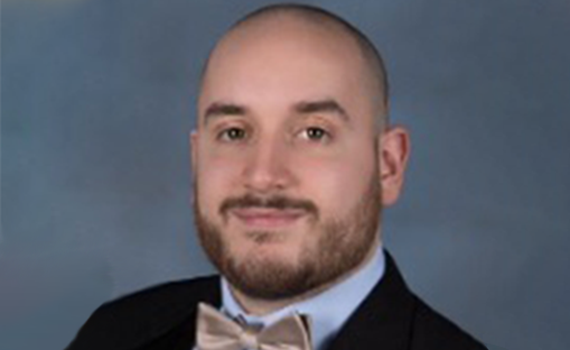By Bella Kalayilparampil, MD (PGY-1)
 Mario Andres Espinosa Hernandez, MS4Many of us believe that, in unforseen circumstances, ones that are devasating and challenge us, we will crumble under the pressure. That although we are equipped with the tools necessary and the will to rise to the occasion, we will freeze, unsure of our next steps. Such was not the case for fourth year medical student, Mario Andres Espinosa Hernandez, whose life changed in an instant on a regular Tuesday at his local gym.
Mario Andres Espinosa Hernandez, MS4Many of us believe that, in unforseen circumstances, ones that are devasating and challenge us, we will crumble under the pressure. That although we are equipped with the tools necessary and the will to rise to the occasion, we will freeze, unsure of our next steps. Such was not the case for fourth year medical student, Mario Andres Espinosa Hernandez, whose life changed in an instant on a regular Tuesday at his local gym.
"All you could hear was shouting. 'Somebody, help! She's not breathing!'" Unsure of what was happening, Mario, at a nearby exercise station, rushed over to help without any idea of what was to come or how fatal the situation would turn out to be.
"Somebody, help!"
A few feet away from Mario lay 20-year-old Nataly* who was born with Tetralogy of Fallot. She had undergone many childhood surgeries to correct the cardiac abnormalities that were incompatible with life. Mario, feeling compelled to help, knew none of this. "All I could recall was feeling a very thready pulse, and I knew this was taking a turn for the worse. I yelled for an AED to get pads on her and when we removed her shirt, I noticed a large thoracotomy scar and knew this all probably had to do with her cardiac history." Quickly realizing that Nataly had now lost a pulse, Mario, with the assistance of another nuse who frequents the gym, began chest compressions on the young woman. After four rounds of chest compressions, the AED alerted them of a shockable rhythm. "I yelled 'Clear!' and everyone held their breath as the machine administered a large shock." After five rounds of CPR and the AED administering three shocks, the EMS arrived on the scene. "One more shock from the EMS and she was back to sinus rhythm—we had saved her!" Mario, astounded, says the rest of that day was a blur.
"We had saved her!"
It was only days later that he got a call from the young woman's father, in tears, that he came to know the full story. "Her dad said that Nataly was born with Tetralogy of Fallot, and she had lifesaving surgery in childhood that helped improve the blood flow out of her heart. He said that she was due for the revision of that surgery in the coming weeks, and that she may have overexerted herself at the gym leading to her cardiac arrest." Nataly was transported to UAB hospital and later airlifted to Vanderbilt medical center for emergency cardiac surgery with her cardiothoracic surgeon. Per Nataly's father, she is recovering from her surgery without any serious hypoxic injuries from her most critical moments at the gym.
It is sufficient to say that Nataly may not be alive today had it not been for the determination and courage displayed by Mario. He attributes a lot of his preparedness in that situation to the wonderful training he has received at UAB with code-simulations and through his various inpatient rotations. Mario matched into emergency medicine at one of his top choice programs and will begin his training at the University of Florida at Gainesville this June.
According to Mario, the skills he exhibited at the gym reflect the type of quick-thinking and immediate action that must be taken while working in emergency situations. "Now, more than ever, I know that I am meant to be an emergency medicine physician." His story, and many other stories like his, remind us of the impact that we as physicians can have on the world around us and in the communities we live in. Our training uniquely enables us to help people in their most vulnerable moments, in a way that transcends the clinical setting. We are equipped with the tools to not just be bystanders in a crisis, but to be conduits of hope and action, both delicately intertwined to provide healing.
*Surrogate for the young lady's actual name